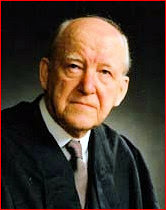The More Things Change The More They Stay The Same
 As I continue to read through Iain Murray’s splendid volume Lloyd-Jones: Messenger of Grace I have been blessed and strengthened by the example set by the good doctor ML-J. This evening I read through the chapter on Old Testament evangelistic sermons (55-83) and was impressed with ML-J’s concern with using the Old Testament to open the eyes of the lost to their true condition. It is a beautiful thing to behold the use to which ML-J put the text of the OT.* Lloyd-Jones was really doing at least two things at once.
As I continue to read through Iain Murray’s splendid volume Lloyd-Jones: Messenger of Grace I have been blessed and strengthened by the example set by the good doctor ML-J. This evening I read through the chapter on Old Testament evangelistic sermons (55-83) and was impressed with ML-J’s concern with using the Old Testament to open the eyes of the lost to their true condition. It is a beautiful thing to behold the use to which ML-J put the text of the OT.* Lloyd-Jones was really doing at least two things at once.
The first thing ML-J was doing was rehabilitating the OT for the church. In his day, ML-J saw that the church failed to read, meditate upon, and use the OT. It was as if the New Testament sprung out of nowhere. So ML-J was recalling the church to re-encounter 2/3rds of God’s Word. The second thing ML-J was doing was confronting unbelievers with a mirror of themselves. Men and women, boys and girls are pretty much the same whether in mid-20th century London or in 8th century BC Jerusalem. People struggle with sin wherever they live. We are all children of Adam and Eve this side of Eden. People will not seek a Savior without sensing their need for salvation. ML-J’s use of OT evangelistic sermons brought unbelievers face to face with reality, especially the reality of a wrathful God. The good news that is the gospel will not look like good news if it is not writ against the backdrop of the bad news of sin. ML-J demonstrates how useful the OT is for outreach to the unbelieving world.
Murray wonders why evangelical churches in the UK at the end of the 19th century and beginning of the 20th century failed to preach 2/3rds of the Bible with power and conviction. One of the problems was the acid of critical scholarship which called into question the integrity of the OT. He notes,
A very different position obtained when Dr. Lloyd-Jones began his ministry. And today any Old Testament preaching, let alone of an evangelistic nature, is often hard to find. Those of us who preach are probably conscious of our deficiency in this regard. But why should it be? One reason is that we have been living in the after-shock of the assault which was made on the Old Testament by an unbelieving scholarship towards the end of the nineteenth century.
At the beginning of the twentieth century the Scottish Presbyterian minister and higher-critic, Professor George Adam Smith, gave eight lectures at Yale which were subsequently published as Modern Criticism and the Preaching of the Old Testament. Smith’s case was that higher criticism had provided a new understanding of what was dependable in the pages of the Old Testament. Ministers would therefore now be able to discriminate and deal with the Old with more confidence. The result, Smith assured his hearers, could only be beneficial to their preaching. There could not have been a greater delusion. N. L walker, reviewing Smith’s Yale lectures, said:
“The book is fitted to do a great deal of mischief…Written apparently for the purpose of relieving the perplexities of such preachers as have been disturbed by the higher critics, it has unquestionably failed in that aim. Many preachers will continue to have as many difficulties as before. Professor Smith fails to meet the situation. He has done worse than that. He has awakened doubts where none previously existed and seriously hindered the evangelistic work of the Church.”** (61-63)
This all sounds familiar to me. It appears the more things change the more they stay the same.
* I should say that ML-J’s OT sermons (at least those in this volume) are not particularly redemptive historical and verge on what has been called exemplaristic. That is, ML-J feels free to jump from the OT context right to the situation of his contemporary hearers without going through Jesus Christ. This would be the one area where I would demur from ML-J’s example.
** Murray cites N. L. Walker, “The Case of Prof. George Adam Smith,” in The Presbyterian and Reformed Review (Philadelphia, October 1902): 596.


